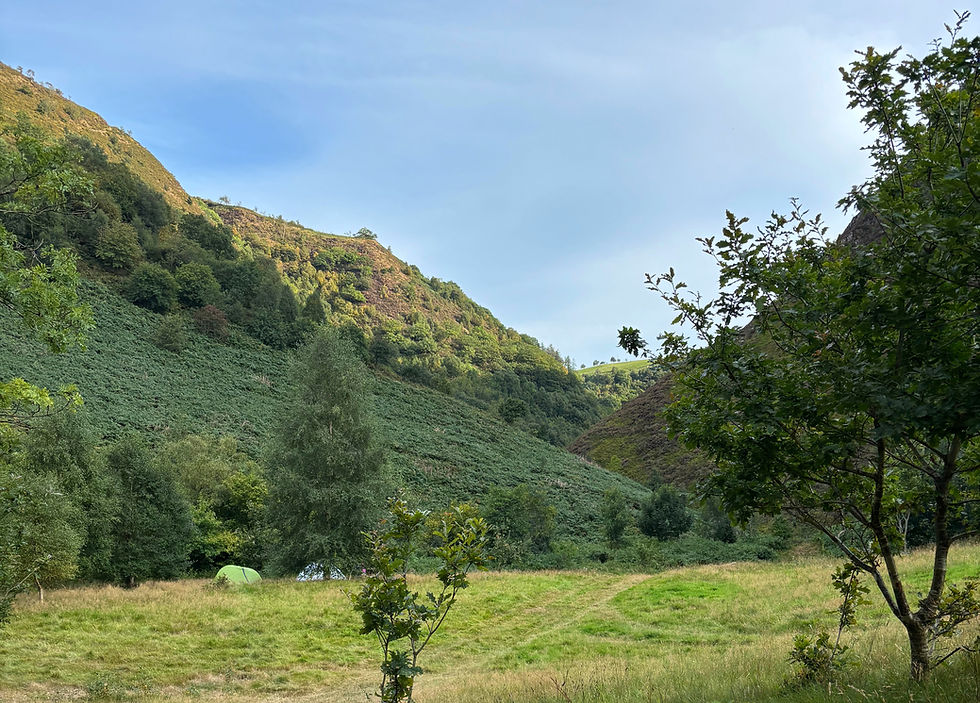The Story of Our Cacao: Part 1 - From the Heart of the Sierra Nevada
- Ecstatica

- Apr 30
- 3 min read
Updated: Aug 28
From the soils of the Sierra Nevada to the cups we raise – a story of resilience, regeneration, and the people behind our cacao.

When I made the decision to start Ecstatica and serve cacao at our events, I knew instantly who I wanted to source it from – Tagbi Chocolate.
In 2022, I spent several months living in Colombia, where I had the privilege of staying in a magical little community tucked into the Sierra Nevada on the Northern Colombian coast. This was a place deeply rooted in connection - with the land, with the nearby Indigenous tribes, and with the ancient wisdom of the plants that thrive there. Among them is cacao, a revered plant medicine, as powerful and transformative as its more infamous cousins. It’s known for its heart-opening qualities - helping people soften, tune in, and speak from a place of truth and compassion.

Just a short walk from the community was a cacao farm – the home of Tagbi. I visited the farm several times and got to know Juliana, one of the Cacao farmers at Tagbi, who has done an extraordinary job bringing the spirit of cacao into the world through this beautiful brand. Juliana truly embodies cacao - warm, grounded, wise. She’s a cacao expert in every sense, and she’s generously offered to share the story behind the cacao we drink together at Ecstatica.
It’s a story that begins over 10,000 years ago...
“If we're going to talk about the origin of cacao, we must talk about one of the most incredible ecosystems that exist on this planet: the Amazon. Here, we find the oldest cacao traces in the soil (10,000 years ago) and plenty of cacao varieties compared to other places in the world.
Cacao is a tropical tree. It loves to be around bigger trees and other plants, and it only grows 10 degrees above and 10 degrees below the equator. In Colombia, 95% of the cacao is fine flavour and aroma. The cacao genetics we have helps a lot, but it also requires dedication from the cacao producers.
More specifically in La Sierra Nevada de Santa Marta, in the Colombian Caribbean, we find a cacao variety called "Criollo." It is very special, not bitter, and has a natural sweetness.
Sierra Nevada territory has been transformed through the years. It is home to four different Indigenous communities: Arhuaca, Wiwa, Kaggaba, and Kankuama. During the 1950s, people from other regions in Colombia started coming, running away from the civil war that started at that time due to differences between the two political parties. Some of these families brought their own cacao seeds and started their plantations in these mountains. In the 1990s, others began to plant coca for illegal use, and with this, deforestation and social problems increased.
We guess people are familiar with the "war against drugs," so the positive part of this project was the money from the USA that the Colombian government invested in encouraging farmers to cut the coca for illegal use and plant cacao, coffee, or honey instead. In case farmers did not do this, they were going to be sprayed with glyphosate. That’s when cacao farmers who were not involved in planting coca started cutting the coca from neighbours who did not want to, avoiding being sprayed with this poison.
This project was called "Cacao para la Paz" - cacao for peace - and cacao keeps bringing peace until today.

Now we have a mix of varieties: the Criollo, the cacao brought by the families that came later, and the ones that were used for reforestation in this project.
2010 was the year when farmers and Indigenous communities (Wiwa and Kaggaba) created the cacao cooperative, and since then we have created a diverse community around cacao. This powerful plant organises and makes us work together no matter our differences. Here, we learn about cacao, chocolate, people, culture, business, clean agriculture without synthetic fertilisers or poison of any kind.
Chocolate Tagbi is part of this community. We truly believe that organic agriculture is a powerful tool that brings us freedom, and we're so grateful to offer pure cacao made with special cacao, fed from soils full of life on a farm that consciously closes all natural cycles.”
A fascinating story - and this is just the beginning.
Stay tuned for Part 2, where we dive deeper into the journey of cacao, from sacred seed to the heart of our Ecstatica events.
Discover more
Before you go…Check out this beautiful video Juliana sent us, made especially for the Ecstatica community 🌿✨

With love,
Yasmin & the Ecstatica Team




